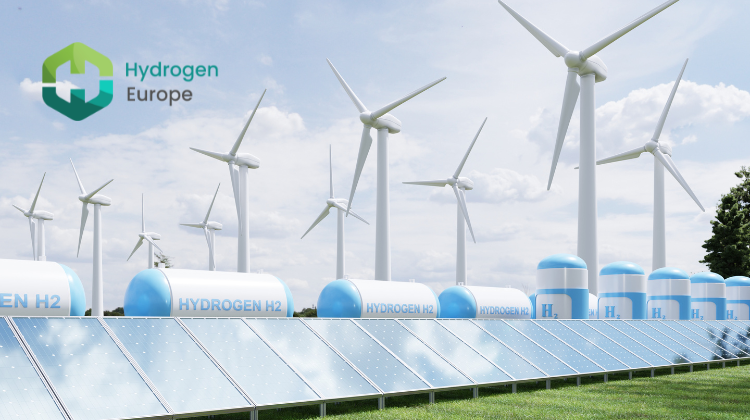Hydrogen Europe asserts that the ambiguity surrounding the concept of bankability is acting as a significant barrier to financing green hydrogen projects. Despite its widespread use, the term lacks a consistent technical definition, creating uncertainty among investors and developers.
“The concept of bankability has become a buzzword, but its lack of a clear definition prevents green hydrogen projects from accessing the necessary financing,” the organisation warns.
Its core proposal is the creation of a Bankability Seal, a certification that would establish standardised criteria to align projects with the requirements of financial institutions.
“The Bankability Seal would offer investors assurance that projects comply with robust financial and technical standards,” adds Hydrogen Europe.
Lessons from the solar industry: standardisation as a gateway to capital
The report references the early experiences of the photovoltaic (PV) sector, particularly during the 2007–2008 financial crisis. Projects that had strong financial models and risk mitigation frameworks were still able to attract financing despite a credit squeeze.
“The experience of the solar sector demonstrates that standardisation and certification are key to unlocking investment in emerging technologies,” the report notes.
Supportive frameworks, such as Germany’s feed-in tariffs, helped create investor confidence—an approach Hydrogen Europe sees as applicable to hydrogen today.
A decentralised yet effective structure
Hydrogen Europe argues that bankability must operate as a self-organised management system, coordinated among developers, banks, investors, EPCs, manufacturers, and certifiers.
“A stakeholder dialogue is essential to establish a shared understanding of what constitutes a financeable project,” the organisation suggests.
Such a structure would enable the translation of financing requirements into actionable technical and financial design standards, similar to quality systems in aviation or food safety.
Active involvement across the value chain
The organisation stresses that the success of this model depends on the proactive involvement of every actor across the hydrogen value chain.
“The active participation of all value chain actors is crucial to defining standards that reflect market realities,” the report explains.
This includes developers securing robust off-take agreements and permits; EPCs ensuring technical guarantees; and component suppliers committing to quality, certification, and regulatory compliance.
Investment gap: only 7% of announced capital committed
One of the report’s most striking findings is the sharp gap between pledged and actually committed investment. Out of the USD 514 billion announced to deliver 48 million tonnes of low-emission hydrogen by 2030, only USD 38 billion has been firmly committed so far.
“This figure represents just 7% of the total announced,” Hydrogen Europe states.
This financing gap is attributed to the immature state of the market, limited off-take agreements, and above all, a lack of clear bankability criteria.
Concrete progress: the European Commission’s push
In May, the European Commission selected 15 renewable hydrogen production projects to receive nearly €1 billion in subsidies through the European Hydrogen Bank’s first auction.
These projects, located in Spain, Portugal, the Netherlands, Finland, and Norway, aim to build large-scale hydrogen infrastructure. Funding ranges from €8 million to €246 million per project, available over a period of up to 10 years, helping bridge the cost gap between renewable and fossil hydrogen.
Among the selected projects are:
-
GreenH2Atlantic (Portugal), featuring a 100 MW electrolyser powered by solar energy.
-
Catalina (Spain), an integrated project connecting renewable generation, hydrogen production, and industrial end-use.
-
MadoquaPower2X (Portugal), focusing on renewable ammonia for export.
-
H2ermes (Netherlands), targeting port logistics integration.
-
Ivana (Finland), combining electrolysis with hybrid storage systems.
These initiatives are expected to produce 2.2 million tonnes of renewable hydrogen over the next decade and avoid more than 15 million tonnes of CO₂ emissions.
“The allocation of funding to these projects demonstrates the EU’s commitment to developing renewable hydrogen,” Hydrogen Europe affirms.
A second auction is planned for 2025, reinforcing this strategy under the REPowerEU initiative, which aims for 10 million tonnes of domestic green hydrogen production by 2030.
The selected projects are listed in the following table:

Source: European Commission
Building a structured financing framework
Hydrogen Europe concludes that bankability in hydrogen must combine financial viability with technical and regulatory alignment. Projects must meet standards such as ISO 22734 (electrolysis systems), ISO 14687 (hydrogen fuel quality), and align with EU regulations such as RED III and the EU Taxonomy for Sustainable Investments.
“A systematic approach will reduce investment risk, enhance project credibility, and accelerate the development of the hydrogen economy,” the organisation concludes.
With initiatives such as the Bankability Seal and funding momentum from the European Commission, the sector may soon transition from scattered announcements to large-scale, bankable deployment.






























